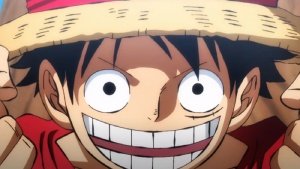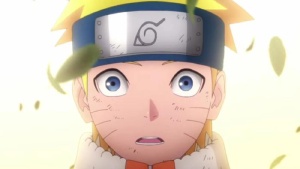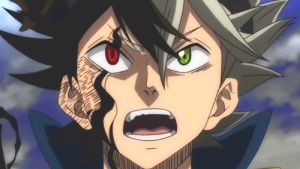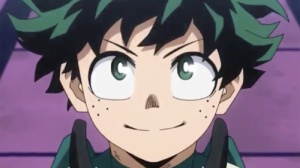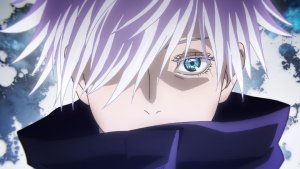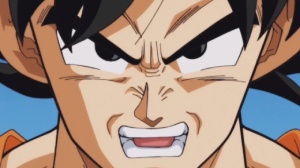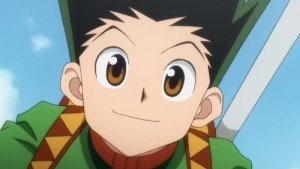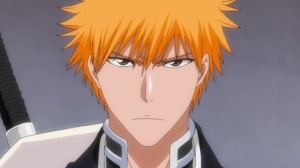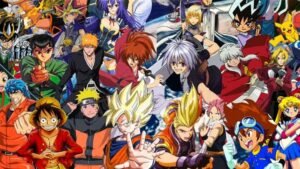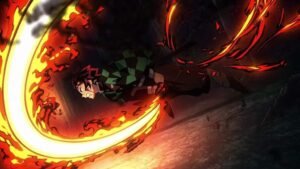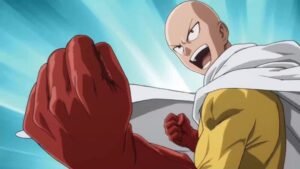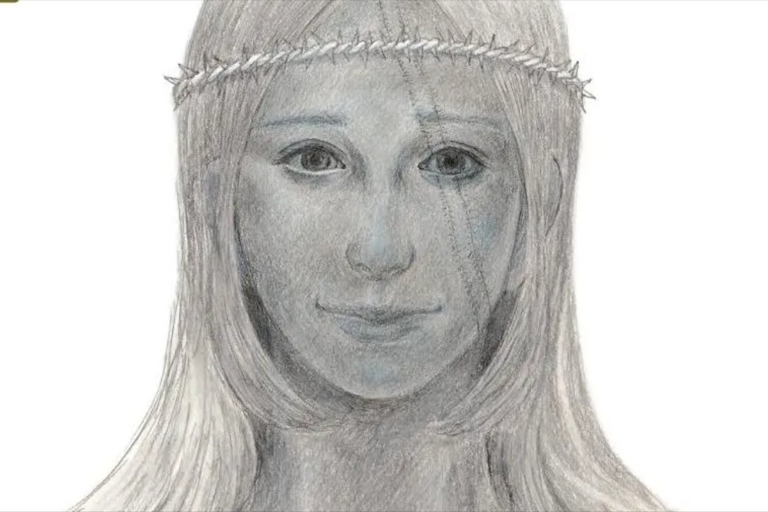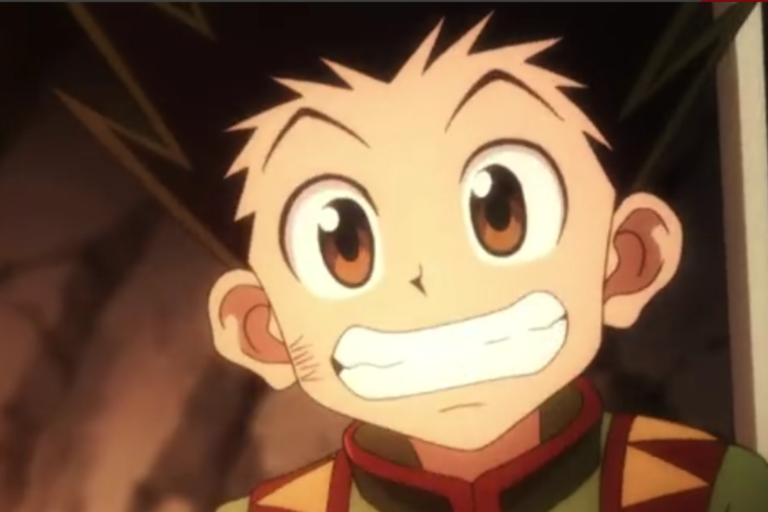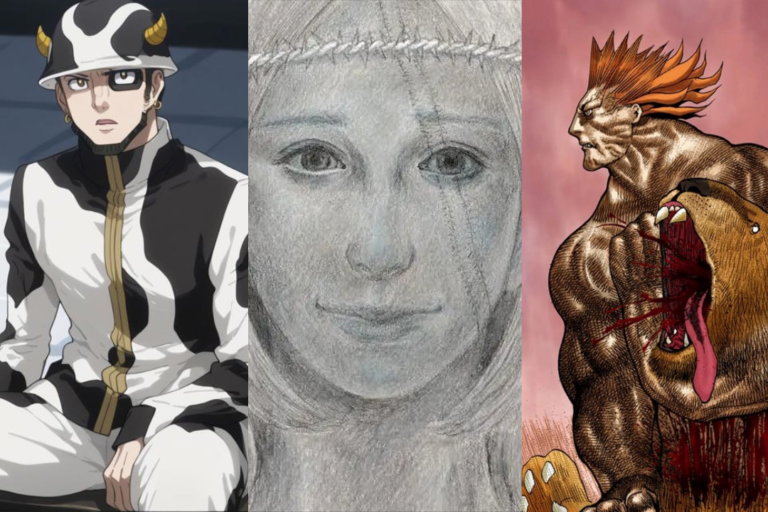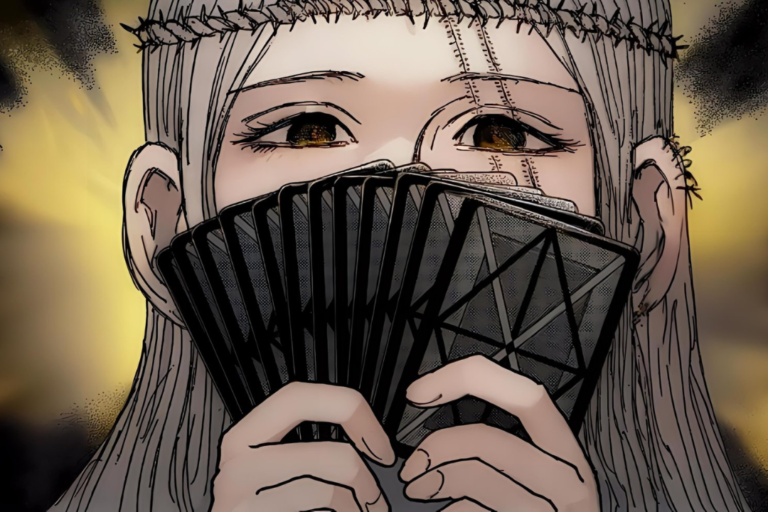Hunter x Hunter: Hisoka’s Card Language Explained
Hunter x Hunter is filled with subtextual language and Hisoka’s use of card suits in his dialogue and outfits provide a richer experience with the character.
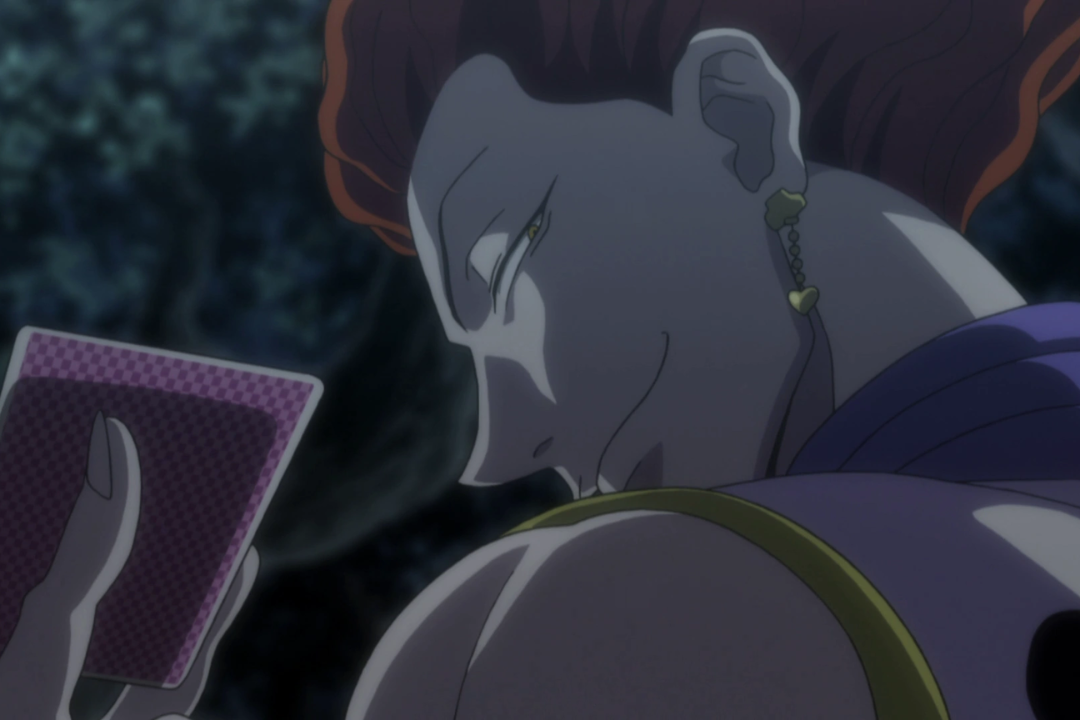
As Hisoka is entering his riskiest thrill ride in the entire story, let us examine how Hisoka communicates to both the characters and the audience alike through the card suits added to his text boxes and design.
This is one aspect missing from both anime adaptations and is strictly within the manga, so it is recommended to try reading the manga to understand Hisoka’s dialogue.
Hisoka’s usage of card symbols at the end of every dialogue box adds more detail to the intended meaning of his words and actions, making it easier for the reader to understand what Hisoka’s deal is in that given situation.
Credit goes to EyeDoesTruth for the insightful thread and theory revolving around Hisoka’s psychology.
Basic Real Meanings of Each Card Suit
♥️: Hearts (Cups) signify love and emotions. Love, Joy, happiness. Associated with the Clergy or the Church
♦️:Diamonds (Coins) represent wealth and materiality. money, risk, excitement. Associated with Merchants
♠️: Spades (Swords) denote intellect and life’s trials. problems, disappointments, sickness. Associated with the Military or Warrior Class.
♣️: Clubs (Wands) symbolize growth and creativity. work, effort, achievements. Associated with the Peasantry.
In Hisoka’s case, they have context-based meanings as appraised by this thread.
♥️ – The simplest of the 4. Represents sincerity and curiosity
♣️ – Signifies chaos, also often used in an inquisitive/investigative way
♦️ – Represents Hisoka working towards a specific goal,
♠️ – Represents him committing to a certain role and being more task-oriented
— EyeDoesTruth🕌 (@nfmaster_99) October 12, 2022
♥️: Hearts are the simplest of the four suits that represent sincerity and curiosity. This is Hisoka speaking plainly but can also be used to express curiosity over a development or a situation or even a person.
♦️: Diamonds are the most risk-centric of the four suits that represent chaos. This is Hisoka taking risks by working towards a specific, likely long-term goal, mostly centering on pursuing an opponent or favorable conditions for a future fight.
♣️: Clubs are the most creative of the four suits that represents growth and effort. For Hisoka, this is where Hisoka embodies his chaotic persona and role in the story, usually expressed through his curiosity and desire to stoke flames or further curiosity in a situation he is in or in what he observes.
♠️: Spades are the most intellect-based of the four suits that represent the desire to learn more or dwell on specific problems. For Hisoka, this suit represents him committing to a certain role and being more task-oriented.
Card Suits and Seasons
The suits represent seasons symbolically. Heart being spring, clubs being summer, diamonds being autmn and spades being winter. This is important in regards to Hisoka's visual characterization. In the series we see him with two different shirts, either Heart/Diamond or Club/Spade pic.twitter.com/Js62LLP1PE
— EyeDoesTruth🕌 (@nfmaster_99) October 12, 2022
Each suit also has a relation to the seasons in a symbolic way.
♥️: Hearts represent Spring, which pertains to Childhood and is the first season, so to speak, to think about.
Notice its tie-in to the aspects of love and joy and its connection to the clergy or the Church, the place where children are initiated into society outside of their parents.
In the case of Hisoka, this shows his love and enjoyment over a specific situation, where he is fully devoted to his life pursuing the art of fighting for its own sake.
♣️: Clubs represents the Summer, the season of Youth, a much longer season and a season to look forward to for children.
Notice its tie-in to the aspects of growth, effort and creativity and its connection to the Peasant class, where labor and effort, the spending of quality time, is emphasized, as well as the seeming eternity of this position.
In the case of Hisoka, this is tied to him enjoying the moment and playing around in chaos, investigating and taking in situations out of curiosity and without worry about the consequences. If we apply the idea of Clubs as Peasant-coded, this could also be where he applies his self-perception as “vanilla” or as a “normal person” in Chapter 405: “Masquerade”.
♦️:Diamonds represent Autumn, the season of Growth, representing the transition from children to become adolescents.
Notice the tie-in to the aspects of money and materialism, the connection to the Merchant class, as well as taking risks for the sake of a goal. Children become teens and slowly focus on material gain and purpose instead of living in the moment.
In the case of Hisoka, this is where he is goal oriented and “matures” into a specified purpose. Another tie-in is to the merchant class where Hisoka sells his services in exchange for gain, which in his case would be improved odds at a fight he wants, as shown in the story of the Phantom Troupe.
♠️: Spades represent Winter, the season of Adulthood and Old Age, showing how adults age over time in a long Winter season.
Notice the tie-in to the aspects of intellect and sickness, the connection to the Military or Warrior class, as well living through life’s trials and disappointments.
In the case of Hisoka, we see him taking something more seriously than intended, as he transitions from a mercenary/Merchant-like attitude to a military officer, as shown in Chapter 92: “September 3rd, Part 8” where Hisoka, pretending to be the average Phantom Troupe member who does not know Killua or Gon, threatens to kill Killua if he interfered with the match between Gon and Nobunaga.
Card Colors and Truth
Let me clarify this again.
Heart = Childhood (Spring)
Club = Youth (Summer)
Diamonds = Growth (Autumn)
Spades = Adulthood/Old age (Winter)Also I think the red suits have a tendency of being truthful whereas the dark ones tend to be dishonest.https://t.co/bdl0E7g6CT
— EyeDoesTruth🕌 (@nfmaster_99) October 13, 2022
Even the colors of each symbol tell us more about how truthful a Hisoka statement is.
Hearts and Diamonds are red symbols while Clovers and Spades are black symbols.
From contextual readings, red symbols are more honest and straightforward, since they are more focused and blunt.
However, black symbols lean towards dishonesty or hiding truths, since they are when Hisoka is stuck in a role he is placed in (Phantom Troupe member or team player) or when he intends to sow chaos within a group.
Red symbols reflect Hisoka’s raw urges and individual freedom while the black ones reflect his social role and his desire to sow tension and discord for the sake of his personal pleasure.
At the same time, each symbol of the same color works as a pair for Hisoka: one that focuses on chaotic pleasure (hearts and clubs), another on focused purpose (diamonds and spades).
The design assists in characterizing Hisoka as a thrill-seeker as it emphasizes the ambiguity of Hisoka’s motivations and narrative role in a given arc.
Card Suit Combinations and Outfits

If you notice, Hisoka wears different attires in each arc and they reflect his dominant mood or narrative purpose in that arc and they fit a pattern.
Following the suit pairing, we see that each shirt follows that idea, with one pair as the dominant mood shown in the front.
In the red pair, hearts and diamonds represent Hisoka focusing on his personal pleasures and being more straightforward. In other words, the diamond represents confirmation of Hisoka’s trade as a merchant of death and the heart makes this trade more of a pleasure than a chore.
In the black pair, clubs and spades represent Hisoka sowing chaos while fulfilling a specific social or task-oriented role. In other words, the spades are confirmation that Hisoka is here to cause trouble and confuse the audience and the clubs confirm the chaotic nature of Hisoka’s part in the arc he is in.
Hunter Exam Arc

His first outfit shows Hisoka wearing a shirt with the black suits in front and the red suits at the back.
This shows Hisoka is being task-oriented while holding back his pleasures.
Hisoka’s “front”, as we will call it, is to find potential toys for him to fight or date in the Hunter Exam.
However, the excitement Kurapika and Leorio have caused him brings his darker, simpler impulses to the forefront, making him lose control for a time until Gon snatched his number badge in the third exam.
Upon finding Kurapika and knowing of him as a survivor of the Kurta Clan, Hisoka plots the stages of his plan regarding his fight with Chrollo.
He whispers to Kurapika about the September 1st meeting with the Phantom Troupe in Yorknew City.
Heaven’s Arena Arc

For the Heaven’s Arena arc, Hisoka puts on a shirt with the red suits of heart and diamond in front.
One nice pattern from the 2011 anime is the color of the outfit, expressing a layer of simplicity.
Here, Hisoka wears a black shirt with all four suits in red, showing how all these feelings are true but by default, Hisoka is expressing his simple raw desire for pleasure and enjoyment.
The red suits represent Hisoka’s honesty and straightforwardness in a black background of dishonesty and deception, which emphasizes Hisoka’s ambiguity even more.
However, the tell will always be the specific suits in front, representing Hisoka’s raw desires expressed in his comfort zone, since Heaven’s Arena is his religious place of worship, where pilgrims of combat indulge in this pleasure.
Yorknew City Arc

Hisoka has three outfits in the Yorknew City Arc.
First, he hears a shirt where the red suits (Diamonds and Hearts) are in the front, which he wears for the entire anime version of the arc.
This is the outfit he shows to Kurapika, where he reveals his desire for Chrollo and slyly slips an alliance with Kurapika to ensure that he can find an opening to fight Chrollo.
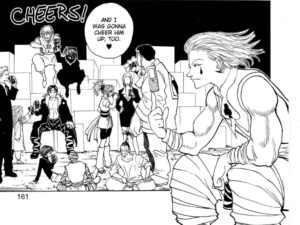

The second shirt, which he wears for Uvogin’s requiem, is not shown in the anime, where Hisoka only has one suit in front, the Club but the symbol on the back is a Diamond, a mixture of black and red suits.
However, the outfit still follows the same rules, albeit expressed differently.
The club symbol is surrounded by a spade pattern around the lining of his shirt while the heart is surrounded by a diamond pattern.
With the removal of the red suits on the back, this means that Hisoka is fully committed to a social role like joining the Phantom Troupe’s assault on the auction yet with the club in front, this means he will sow chaos.
However, without the red on his back, this means he does not express full enjoyment.

The third shirt, which he wears in the second half of the Yorknew City Arc in the manga, is the reverse of the first one.
Here, he intends to commit to the task-oriented function of a Phantom Troupe member but on the back, he has the red suits back, indicating his hidden purpose.
He is basically telling the Phantom Troupe that he will be working for them and that function is what they should understand of him at this time.
This is seen with how responsive he is to the false prophecy he produced with Texture Surprise to ensure he would stay inside the hideout while Kurapika takes care of the other Phantom Troupe members that are after him for Uvogin’s death.
He would later take off this shirt when he comes out of the hideout to face Chrollo when he is all alone.
This was supposed to be his defining moment as he removes the fake Spider tattoo and becomes honest with his newly-acquired battle partner, prepared to engage in this date.
However, Chrollo reveals that he was stripped of his Nen by Kurapika and thus the bare Hisoka, now fully honest and transparent with his desires for this fight, lost interest.
Greed Island

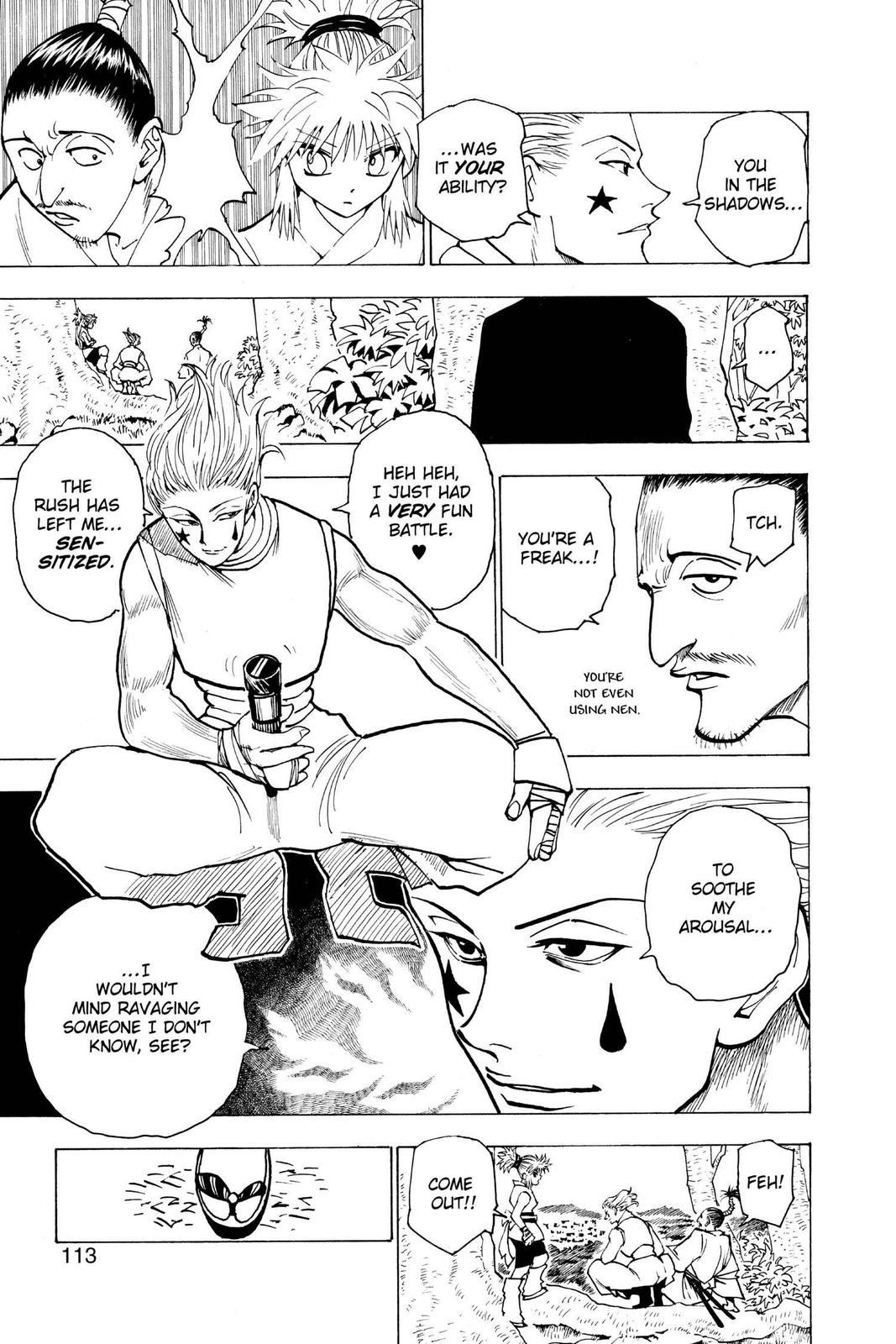
This is where the anime and manga depart heavily so for the sake of analysis, we will follow the manga.
Because in the manga, he wears no card suits and it is all blank.
This is Hisoka in a liminal state, unsure of what he is feeling.
This also indicates his somewhat disappointed state after finding out that Chrollo lost his Nen, so essentially he is a blank slate until he can ensure that Chrollo, his chosen date, is prepared for their actual fight.
If we follow the anime version, this is Hisoka having fun but Hisoka only found fun MUCH LATER in the arc because the whole point of Hisoka in Greed Island is that, as Killua noted, Hisoka is bored, likely for the first time in the entire story.
13th Chairman Election Arc
Hisoka wears another shirt with the black suits in front.
In the anime, he has a belt with all four suits in red, which is a cute detail.
This all represents Hisoka once again fulfilling a role, this time as Illumi’s date partner and subordinate since he is hired by Illumi to help with retrieving Killua and Alluka.
Succession Contest Arc

For the fight with Chrollo in Heaven’s Arena, Hisoka wears the black suit shirt, representing the function he is going with right now is to fight and kill Chrollo while holding back his delight over

However, the volume cover where the chapter begins has Hisoka wear the black suits on the back instead while Chrollo’s face is shown in the background, likely an expression of his truest sentiments is in the volume cover.
The black suits could also be a way of Hisoka showing that he is being formal in the event with a mix of chaos from the club symbol.
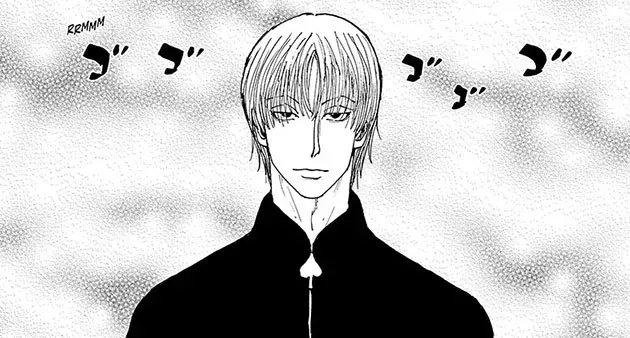
After this, when found in the Black Whale, we see two Hisokas, a fake one (Bonolenov) in Chapter 392: “Information” and the real one in Chapter 405: “Masquerade”
Fake Hisoka wears a black long-sleeved tracksuit with what appears to be a spade zipper and on the back is an ornate heart with a line going down that seems to reveal a diamond suit.

Later in Chapter 405, we see Hisoka wearing a formal attire without any suit symbolisms attached. If we follow the Greed Island principle, this means that he is in a liminal state.
Story-wise this makes sense since Hisoka has yet to occupy a role other than being the desired target of Chrollo and the Phantom Troupe.
However, this could also be a change in his demeanor as he does not have the star and tear makeup on either. This could indicate that Hisoka is no longer interested in expressing ambiguity in front of others and is focused on blending in with the crowd.
The Suits as His Toys
His Favorites ♤ ♡ ♢ ♧ (explanations of the card suit/symbols for each character in the description)
byu/CitrusCitizen inHunterXHunter
Another way of interpreting the card suits in Hunter x Hunter can also be seen in the personality tests Hisoka devised for Hatsu types, as shown in this reddit post by r/CitrusCitizen.
♥️ – Chrollo Lucilfer (Specialist): The heart being Hisoka’s rawest self, his expression of love, it makes sense that Chrollo would best represent the heart.
Chrollo’s symbolisms are tied to Christianity, such as the Reverse Cross of St. Peter, who is the Prince of the 12 Apostles, a first among equals in the same way Chrollo views himself as (“My orders are of the utmost priority. My life is not.”).
Chrollo’s curiosity over humanity and his desire to steal Nen powers also aligns with the Heart suit.
In the personality test, Hisoka describes Specialists as “independent and charismatic” and given Hisoka’s obsession with Chrollo throughout the story, it might imply that Hisoka favors Specialists or specifically Chrollo the most.
♦️ – Machi Komacine (Transmuter): The Diamond representing Hisoka’s focused, patient side somewhat fits Machi, who is someone that he is curious with.
Hisoka characterizes Transmuters as whimsical and deceptive, which makes for an interesting placement considering that, as we established, red suits are likely more truthful and straightforward than black suits. Alternatively, this could represent how true to himself being a Transmuter is for Hisoka.
In other words, Machi is someone he can connect to by virtue of similarity. And if you notice, both red suits are from the Phantom Troupe, which could indicate that even though he is not a true member by heart, Hisoka does find a clique among the Spiders.
♣️ – Gon Freecss (Enhancer): The Club being a representation of Hisoka’s chaotic side somewhat fits with Gon’s impulsive nature, except by itself, this suit is not held back by any rationality or deception unlike with Hisoka accompanying his Club suit with a Spade.
Gon is a new favorite fruit that Hisoka looks forward to see ripen (imagine if Hisoka saw adult Gon from the Chimera Ant Arc). The Club being tied to the Peasant class also fits Gon’s attribute as an Enhancer, which Hisoka describes as simple-minded and determined.
♠️ – Illumi Zoldyck (Manipulator): The Spade representing Hisoka’s task-oriented side, akin to a military subordinate, fits Illumi like a glove as a manipulator who has even commanded Hisoka at one point for the 13th Hunter Chairman Election Arc.
Hisoka characterizes Manipulators as logical beings that do things at their own pace, which also fits Illumi’s pacing in the story as someone not dictated by suddenness or even the current flow itself.
Source: Twitter and Reddit
CLICK HERE TO JOIN THE ANIME EXPLAINED WHATSAPP GROUP CHAT NOW!
